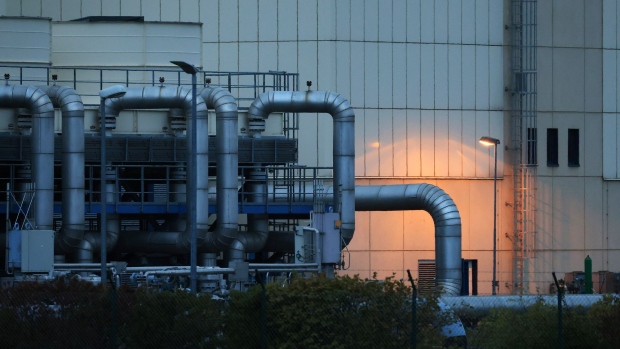Oct 21, 2022
European Gas Falls as EU Leaders Unite to Back Crisis Measures
, Bloomberg News

(Bloomberg) -- Natural gas in Europe declined after leaders came together to back urgent measures, including a price cap, to contain the energy crisis that’s engulfed the economy.
Benchmark futures fell 11% on Friday, posting a third straight weekly loss. The politicians asked the European Commission to propose a “temporary dynamic price corridor,” and said they would pursue a framework to cap the price of gas in electricity generation. They also want to take steps to avoid extreme price spikes and use the EU’s joint purchasing power in negotiations with sellers.
“We sent also a clear signal to the market,” European Council President Charles Michel said. “I’m confident that there will be an effect very soon.”
Read More: EU Backs Energy Measures as Germany Yields on Gas Price Cap
The European Union presented the united front after German Chancellor Olaf Scholz yielded to pressure from other member states for a gas price cap. He had earlier warned such as limit could endanger supply at a time when the region needs all it can get. But countries including France, Italy and Poland had been pushing hard for a cap as dwindling Russian supplies bring the threat of shortages and blackouts.
The bloc’s energy ministers will meet next week to continue trying to hash out the details of the various plans. French President Emmanuel Macron said the aim is to have explicit mechanisms laid out in the next two to three weeks.
Dutch front-month gas, the European benchmark, settled at €113.58 per megawatt-hour, falling 20% in the week. The UK equivalent contract dropped 8.9% on Friday, while year-ahead German power fell 2.9%.
Market’s Relief
The outcome of the summit will bring some relief to markets, with gas prices still three times higher than the five-year average for this time of the year. They have eased more than 60% from their August peak, as Europe started the winter heating season with almost full reservoirs and strong liquefied natural gas flows.
Click here to read the daily Europe Energy Crunch blog
But traders will wait for more details about the design of the EU plan, especially as a price cap has previously remained elusive because of concerns it will encourage gas sellers to look elsewhere.
There are other risks. Cold snaps and any disruption to existing supply from the US or Norway could drive prices much higher, said Nikoline Bromander, an analyst at Rystad Energy. Buyers in Asia are preparing for the winter by stepping up purchases of LNG, which Europe has heavily depended on to replace Russian fuel.
For now, the weather remains mild and forecasts point to strongly above-normal temperatures across continental Europe next week.
©2022 Bloomberg L.P.






